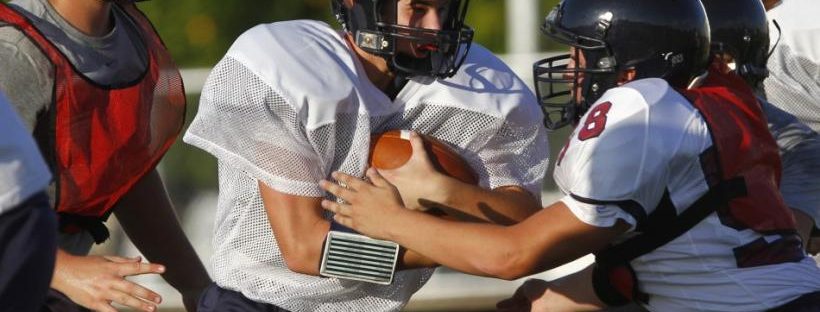Now that school is back in session, it is difficult for all of us who grew up with ample access to sports and the arts to see how our school systems have evolved and have practically eliminated the character-building program of sports participation.
According to Yahoo!, in a study of 35,000 student athletes in Los Angeles, there is a striking correlation between [a] student’s participation in interscholastic athletics and [his or her] performance in both attendance and in the classroom. Student [athletes] attended an average of 21 more days of school per year than their counterparts, and their grade point averages were 0.55-0.74 [points] higher than non-athletes. If sports are among the most potent ways to help create academic achievement, how can schools continue to improve in the classroom without the money to fund sports?
The other side of the argument to curtail spending in sports was reported on in USA Today. Len Stevens, an ex-high school and college coach, feels we should put an end to high school sports. Stevens points out that high school coaches were supposed to be teachers first, and now, fewer than half of them are. A recent study shows that only 10% of students attend games. High school principals say their greatest headache is dealing with parents who have complaints about their child’s experience in sports. [A]re any of these reasons the true underlying explanations [as to] why schools are cutting back on sports spending?
All over the country, schools just don’t have the funds to keep sports programs going. The Pittsburgh Post-Gazette reported this summer that the Gateway school board took the full-time athletic director to part-time and changed middle school sports to a pay-to-play program. 27east.com reported that even in the wealthy East Hamptons, Springs School cut boys’ and girls’ track and field, lacrosse, and cross country, as well as boys’ wrestling and football. The New York Times reported that the San Antonio Northside School District cut 28 athletic coaches. Ypsilanti, Mich., cut their cheerleading squad, and Steamboat Springs, Colo., cut eight coaching positions—[a]nd it goes on and on in rich and poor districts all over the United States.
With all of this bad news about sports in public schools, it is hard to believe that in June of this year, we celebrated the 40th Anniversary of Title IX, which, back in 1972, said, “[N]o person in the United States shall, on the basis of sex, be excluded from participation in, be denied the benefits of, or be subject to discrimination under any educational programs or activity receiving federal financial assistance.” We definitely saw the impact that this powerful law had for women in this summer’s London Olympics. For the first time ever, women outnumbered men on the Olympic team. Women won 29 of the 46 gold medals and 58 out of 104 medals. In 1972, 300,000 high school girls played on sports teams; in 2011, three million played. The results of Title IX alone show that if our government believes in a program that can truly help the underserved in America, positive results will follow.
[W]e know sports [help] mold character and focus, as was proven in the Los Angeles study and shown in the Olympic results. We also know that this recession we are fighting through has dramatically cut the funds schools have to operate, and learning to add and subtract is more important than running a football. Forbes just ran an article debating whether pay-to-play should become a permanent part of school sports. They noted that in the southwestern Ohio school district of Lakota, the pay-to-play fee is $550, up from $300 last year. In northeastern Ohio, the Riverside district charges $521 to participate in cross country, $715 for golf, $783 for football and $933 for tennis. If you weren’t a star in these sports and just wanted to try them, most families would walk away from these fees, [a]nd if you live in a poor area and your priority is putting food on the table, America can be assured these kids won’t have a chance in a pay-to-play world.
NBC Sports reports that the Saginaw School District in Michigan does not have to deal with cutting sports or charging fees because LaMarr Woodley, a linebacker for the Pittsburgh Steelers, donated $60,000 for students to play sports in the school district that gave him the chance to excel at sports. Not every school district has a LaMarr Woodley, but America has concerned citizens in every county who could help make sure this generation has the opportunities to experience the positive influence of sports in molding character and values. […]
Eliminating or having to pay for sports takes away from the basic principal on which this country was built and then was strengthened with equal-opportunity laws and Title IX, just to name a couple of programs that have helped lift kids from poverty to the NFL or the NBA or the WNBA. Most kids won’t go pro in sports, but we know sports [help] build stronger social skills and [teach] kids how to set goals and stay focused, which are building blocks to creating a successful life. If being involved with sports of any kind is one of the best ways to support academic accomplishment, how can our schools continue to improve in the classroom without the money to fund sports? The United States has proven time and time again that it is the greatest country on earth. Sports is a lesson in winning and losing, and if we don’t come to the realization that sports in school is part of the fabric that built this great country, all of us become losers.
Original article here:
https://www.huffingtonpost.com/marc-joseph/kids-without-sports_b_1857511.html
